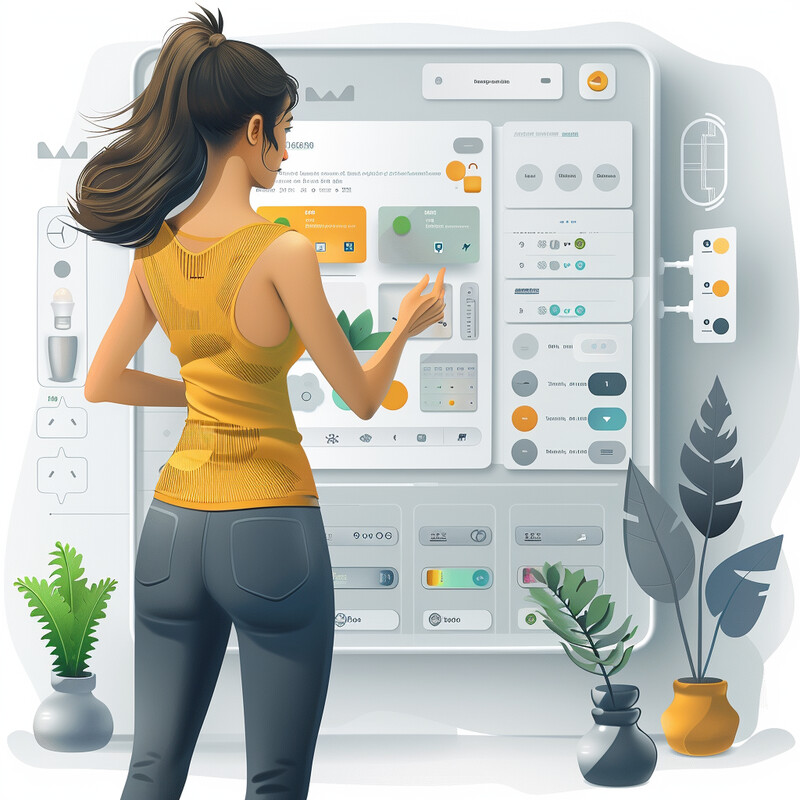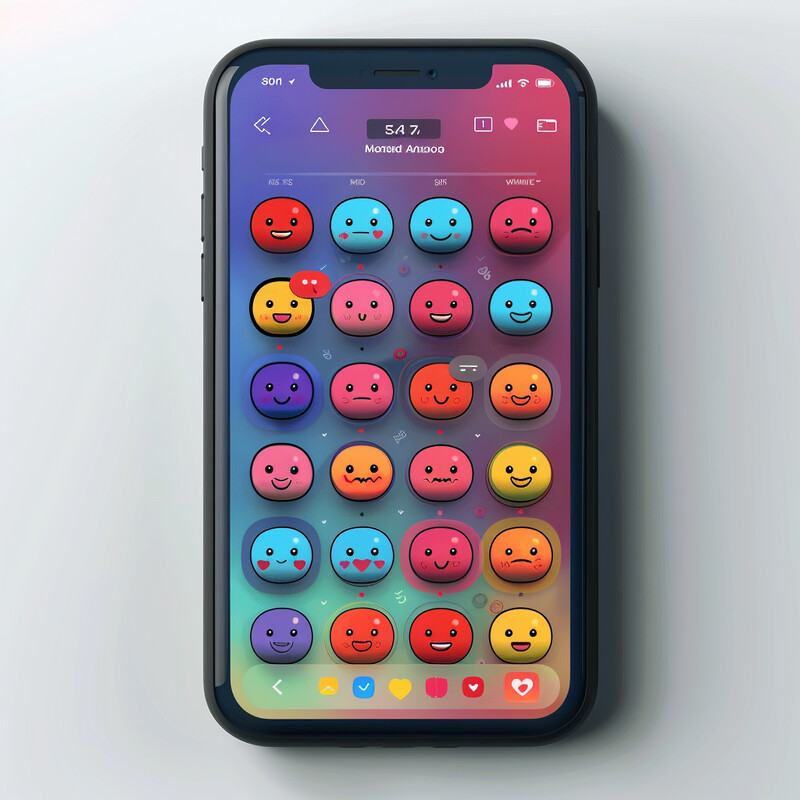1. Improved Matchmaking Accuracy
AI algorithms enhance matchmaking by analyzing a wide range of data from user profiles and behaviors to identify compatible partners more precisely. Instead of relying solely on basic filters (age, location, etc.), machine learning models detect subtle patterns in what profiles a user views or likes, improving the prediction of mutual interest. By continuously learning from successful matches and user feedback, these systems refine their recommendations over time. The result is that users receive match suggestions that better align with their preferences and personality, theoretically increasing the likelihood of meaningful connections. Overall, AI-driven matchmaking aims to shorten the time it takes to find a good match by making the process more data-driven and personalized.

Early evidence suggests AI-based matching can improve dating outcomes. For example, Hinge (an app emphasizing relationship matches) reported that its AI-informed algorithms led to 72% of first dates turning into second dates – one of the highest success rates in the industry. This was attributed to Hinge’s use of deeper compatibility metrics (beyond superficial swipes) to pair people, illustrating how more sophisticated matching criteria can translate into better real-world results. In general, dating services that leverage AI for compatibility matching (such as incorporating personality or communication style analysis) have shown higher success rates compared to purely swipe-based apps. These improvements suggest that AI-driven matchmaking can create more “quality” matches that progress into actual relationships, though long-term success still depends on human chemistry and effort.
2. Behavioral Analytics
Online dating platforms use AI-driven behavioral analytics to understand what users actually want, beyond what they say in their profiles. Every swipe, click, and message provides insight into a user’s true preferences. For instance, how long someone views a profile, their swiping patterns, or the types of messages they respond to can indicate attraction factors that aren’t explicitly stated. AI models analyze these behaviors in aggregate to adjust match recommendations – effectively learning a user’s “hidden” preferences (such as a tendency to like a certain personality type or look). By leveraging this implicit feedback, the system can suggest partners who better align with each individual’s demonstrated interests, making matchmaking more personalized. Over time, behavioral analytics helps refine the algorithm’s accuracy, ideally leading to higher satisfaction as the app “learns” from a user’s interactions.

Research shows that dating app algorithms heavily utilize behavioral data, sometimes in unintended ways. A 2023 study of 240,000 online dating users found that the platform’s recommendation engine favored profiles with higher attractiveness scores, a pattern inferred from user interactions. In other words, the AI observed who was getting more swipes and messages and in turn suggested those popular profiles more frequently. This popularity bias arises directly from analyzing user behavior: as people tend to engage more with certain profiles, the algorithm learns to promote similar profiles to maximize engagement. While this can increase overall matching activity, it also means the AI’s behavioral analytics may prioritize user desirability metrics (like photo-driven appeal) over compatibility. The finding highlights how deeply behavioral signals influence match suggestions and calls for careful tuning of algorithms so that meaningful compatibility isn’t overshadowed by engagement metrics.
3. Fraud Detection and Security
AI plays a crucial role in keeping online dating platforms safe by detecting fraudulent activities and fake profiles at scale. Machine learning models can be trained on patterns of legitimate versus malicious user behavior – for example, bots that send the same message to many people, scammers who ask for money, or profiles using stolen photos. The AI continuously monitors user accounts and flag suspicious anomalies (such as a new profile sending dozens of messages per minute or text that looks auto-generated). Modern dating apps also use computer vision AI to assist with identity verification, ensuring profile photos are real (often by having users take live selfies for comparison). By catching fake profiles, romance scammers, and bots early, AI-driven security measures maintain a safer environment for users. This automated vigilance is far more efficient than manual moderation alone, given the millions of users on popular platforms.

Dating companies report significant success in using AI to fight fraud and fake accounts. For instance, Bumble introduced an AI-based “Deception Detector” in 2023 that scans for signs of spam or scam profiles. In internal tests, this AI system was able to automatically block roughly 95% of accounts identified as fake or suspicious, greatly reducing exposure to scammers. Those flagged accounts that aren’t outright blocked are then subjected to additional human review or verification checks. Beyond text analysis, AI is also used to verify user photos – many apps now ask for real-time selfies or short videos and use face recognition algorithms to confirm the user’s identity, thwarting would-be impersonators. Such measures have become increasingly important as fraudsters also exploit AI (like deepfake images) to create more believable fake profiles. Overall, incorporating AI into dating app security has markedly improved the platforms’ ability to weed out bad actors, helping legitimate users feel safer.
4. Personalized User Experiences
AI allows dating apps to tailor the user experience to each individual, making the app feel more like a personal assistant than a one-size-fits-all service. This personalization can manifest in several ways: the order of match suggestions adapts to your swiping history, the app might highlight profiles with traits you seem to prefer, and even the interface or prompts can change based on your usage patterns. For example, if an AI observes you tend to respond more to a certain type of opener or icebreaker, the app might start suggesting those to you when you match with someone. Some modern dating platforms also employ AI to recommend profile improvements (like suggesting you add a particular photo or bio detail that would attract the kind of match you’re looking for). Essentially, the app learns about you as you use it and then adjusts content and features to better suit your dating style. This dynamic personalization aims to keep users more engaged and satisfied by showing them more of what they’re looking for and smoothing the path to making connections.

Major dating services have begun rolling out AI-driven features to enhance personalization for users. In 2023, Match Group (owner of Tinder and Hinge) announced it is testing an AI tool that will select a user’s best profile photos and even explain why a given match is recommended. This means the app’s algorithm doesn’t just silently curate matches – it can provide individualized feedback, like telling someone “We suggested this match because you both love hiking and have compatible communication styles,” thereby making the process more transparent and customized. User preferences also indicate a desire for smarter, tailored experiences: a recent industry survey noted about 31% of dating app users prefer platforms with AI-driven “smart” features over traditional swipe-only apps. Additionally, platforms implementing personalization report improved engagement – in one case, apps with AI personalization saw up to a 25% increase in 6-month user retention, attributed to better match relevance and user satisfaction. These trends underscore that AI is increasingly used not just to match people, but to personalize the entire dating journey for the individual user.
5. Predictive Analytics for User Compatibility
Predictive analytics in online dating refers to AI systems analyzing data to forecast how compatible two people are likely to be, even before they ever meet or chat. This goes a step beyond basic matching – it’s not just suggesting a person as a match, but actually scoring or predicting the quality of that match. To do this, the AI might look at hundreds of variables: responses to in-app questions, personality test results, interests, communication styles, and even biometric or social media data, depending on the platform. By finding patterns in successful past matches (for example, couples who ended up dating long-term might share certain personality traits or message patterns early on), the algorithm learns what factors tend to predict a good relationship outcome. Then, when new users come along, the system can give a compatibility score or recommendation for each potential pairing. The goal is to identify not just who could match, but who has a high probability of forming a stable or satisfying relationship if matched. This kind of AI-driven compatibility modeling is often presented as a “smarter” way to find not just any date, but the right partner.

Some emerging dating services have begun using AI to predict compatibility in novel ways. One example is SciMatch, a startup that forgoes traditional questionnaires and instead uses computer vision and machine learning to assess personality traits from a user’s face. The founders claim their AI model can predict key personality measures with about 87% accuracy from facial scans. The idea is that by estimating personalities (such as openness, extroversion, etc.) from photos, the app can automatically calculate a compatibility score between two people, expecting those with more aligned personalities to be a better match. Another app, Iris Dating, focuses predictive analytics on physical attraction: it has users rate a series of photos to train an AI on their “type,” and then predicts which profiles the user will find attractive in the future. By doing so, Iris narrows the pool to those it forecasts the user is most likely to like – a proxy for potential chemistry. These predictive approaches illustrate how AI attempts to forecast romantic compatibility or attraction before a conversation even begins. It’s worth noting that experts debate some of these methods (for instance, whether personality can truly be inferred from a face), but such implementations show the growing ambition to use predictive analytics to improve match quality.
6. Natural Language Processing for Communication Analysis
Natural Language Processing (NLP) allows dating platforms to analyze and even coach the communication between users. By examining the text of profiles, messages, and chat conversations, AI can glean insights into a user’s personality, communication style, and the tone of interactions. For example, an NLP system might detect that two people have similar vocabulary use or messaging cadence – which could be a sign of good rapport – and nudge them as a strong match. NLP can also identify topics people have in common or highlight potential red flags (such as overly aggressive language) in a conversation. Beyond analysis, some apps use NLP to support users in real time: offering suggested replies or ice-breaker questions based on the context of the chat. Essentially, the AI “reads” the conversation and either evaluates it (to predict if the conversation is going well or should continue) or augments it (to help users communicate better). This technology thus serves both as a matchmaker’s assistant (by analyzing textual compatibility) and as a personal wingman (by improving communication flow).

A growing number of daters are open to AI assistance in their communications, reflecting the rise of NLP-driven features. According to a 2025 dating report, 60% of men and 45% of women using dating apps said they would welcome AI help with crafting messages and opening lines. This trend is evidenced by tools like Rizz – an AI dating assistant that analyzes chat context to suggest witty responses – which gained popularity by helping users overcome awkward silences or writer’s block. Mainstream apps are integrating similar NLP features: Tinder, for instance, has experimented with prompting users with conversational suggestions and even explaining in profile bios why two people might click, based on language analysis of their interests. Furthermore, NLP-based monitoring is used to keep conversations civil; for example, algorithms can flag if a message’s language is likely to be offensive or coercive (and then warn the sender or give the receiver an option to report it). These uses of NLP in communication analysis show both a desire to enhance user interactions and an effort to ensure those interactions remain positive. By analyzing the content and sentiment of messages, AI can guide more fruitful conversations, increasing the chance that a match leads to a real connection.
7. Emotional Analysis
Emotional analysis in the context of online dating refers to AI assessing the emotional tone or sentiment behind user interactions. This can involve analyzing text messages for positivity/negativity or even detecting emotions from user-uploaded content like voice notes or videos. The purpose is to understand how users feel and respond during the dating process. For instance, sentiment analysis might reveal that two people exchange increasingly positive messages (indicating a growing connection), or conversely that a conversation’s tone has turned tense or negative. An AI could flag a chat that seems to be going badly, perhaps to suggest a different approach or to simply learn that this match is likely not working out. Emotional analysis can also personalize the user experience – if the AI senses a user is frustrated with the app (due to many negative interactions), it might adjust by changing the types of matches shown or offering encouraging tips. Some experimental dating platforms even look at facial expressions or vocal intonations during video chats to gauge comfort or excitement levels. Overall, by inferring emotional cues, AI aims to add an extra layer of understanding to digital matchmaking: not just who users might like, but how those interactions are emotionally resonating.

Dating apps are beginning to leverage sentiment analysis (a form of NLP) to monitor and react to the emotional tone of conversations. For example, an AI system can analyze the text of messages between two users and determine whether the exchange is largely positive, neutral, or negative in sentiment. If the sentiment is consistently positive, the platform might infer strong compatibility or at least a healthy interaction, whereas repeatedly negative or hostile tones could trigger the system to intervene – perhaps by suggesting conflict-resolution tips or by reviewing the match quality. Some services claim even more advanced emotional AI: a few apps have experimented with analyzing users’ facial expressions in photos or video to predict personality traits or mood compatibility. One controversial case is using facial emotion recognition to guess if two people might get along based on how they typically smile or express emotion (though this remains scientifically debatable and raises ethical concerns). Despite the nascent state of these technologies, early integrations of emotional analysis aim to create a more responsive dating experience. By “reading” emotions, AI could adjust matches in real time – for instance, steering a user who seems anxious toward matches who tend to communicate in a reassuring, warm manner. While hard metrics on success are not yet public, the push toward emotion-aware AI reflects a drive to humanize online dating by understanding the feelings behind the texts and swipes.
8. Geographic and Real-time Data Usage
Location and real-time data have long been important in online dating, and AI is making use of these factors in smarter ways. Traditionally, dating apps filter matches within a certain distance from a user – now, AI can combine location with other real-time information to create context-aware recommendations. For instance, the app might know that you and another user attend the same university or frequent the same gym, and highlight that commonality as a reason to match you. Some apps use real-time location data to alert users to potential matches who are nearby right now (which could prompt spontaneous meetups). Others integrate calendars or event data; if two users are going to the same concert next week, the AI might suggest they connect beforehand. Time of day and activity patterns are also considered: an AI could learn that a user tends to swipe more on weekends versus weekdays, or that they respond faster in the evenings, and then adjust match suggestions accordingly (perhaps showing other night-owl users who are also active in the evening). By leveraging geographic and temporal data, AI helps facilitate matches that are not only theoretically compatible, but also practical – increasing the odds that two people can easily meet and have shared experiences.

Studies confirm that physical proximity is a major driver in online dating interactions, validating why apps heavily utilize geographic data. A large-scale analysis published in Sociological Science examined 15 million two-way communications on a dating platform and found that user interactions clustered strongly by region – essentially, people overwhelmingly chat with and date others who live near them. The algorithm in that study even identified distinct local “dating markets” aligned with city and state lines, showing how location data can predict connection patterns. In practice, dating apps use such insights to optimize matchmaking: for example, Tinder’s default settings prioritize showing profiles within a few dozen miles, since matches are far more likely to exchange messages and meet up if they’re in close proximity. Real-time data is another layer being incorporated; features like Tinder’s Festival Mode (launched in 2019) allow users to tag upcoming events they’ll attend, enabling the app’s AI to match attendees with each other ahead of time. Likewise, niche apps have emerged that connect people who happen to be at the same place at the same time (such as two singles in the same café). All of these innovations are grounded in the predictive power of location: knowing that being geographically close greatly increases the chance of a successful connection, dating apps use AI to harness real-time and location data to bring nearby, like-minded people together efficiently.
9. Feedback Loop Integration
Feedback loop integration refers to how dating apps use the results of matches and user feedback to continuously improve their matching algorithms. In essence, the app doesn’t just set you up and walk away – it “learns” from what happens next. If an AI suggests a match and the users end up messaging frequently or going on a date, that outcome is positive feedback indicating a successful recommendation. If a suggested match is quickly ignored or ends in a bad interaction, that’s negative feedback. Platforms integrate these signals: some explicitly ask users for feedback (e.g., “Did you meet this person? How did it go?”), while others infer feedback from behavior (like two people exchanging numbers or conversely, one person blocking the other). This data is fed back into the algorithm to fine-tune future matches – effectively creating a closed loop where the AI gets smarter from its mistakes and successes. The goal of such integration is to incrementally increase match quality: over time, the system hones in on what kinds of introductions yield actual dates or relationships and which do not, adjusting its matching criteria accordingly. This approach moves dating apps closer to a recommendation system that adapts to real-world outcomes, not just initial preferences.

One pioneering example of a feedback loop in dating apps is Hinge’s “We Met” feature, launched in 2018, which explicitly solicits post-date feedback to improve the algorithm. After two users exchange contact information, Hinge later asks each of them if they actually went on a date and whether they would want to see that person again. These responses (e.g., “Yes, we met and I’d like to see them again”) feed directly into Hinge’s matchmaking AI. In early trials, the feedback was very informative – Hinge reported that 90% of members who went on a date through the app said the first date went well, and 72% said they wanted a second date. Such high success indicators help the algorithm identify strong matching patterns. Conversely, if users consistently indicate a match wasn’t successful, the system learns to adjust and perhaps show those types of matches less often. Other apps use implicit feedback: for instance, Tinder’s algorithm observes if a pair it matched ends up having a long conversation (a sign of success) versus unmatching immediately (a sign the match was poor) – this too adjusts future recommendations behind the scenes. By integrating feedback loops, dating platforms create a continuous improvement cycle, where each date outcome refines the AI’s understanding of what makes a “good match,” ideally leading to better matches for everyone over time.
10. Automated Moderation and Content Control
Dating platforms have a responsibility to maintain respectful, safe interactions, and AI has become an essential tool in moderating user-generated content at scale. Automated moderation involves using AI to scan messages, profiles, and images for violations of community guidelines – such as harassment, hate speech, nudity, or spam. Instead of waiting for users to report bad behavior, modern apps deploy machine learning classifiers that can instantly flag a rude message or an inappropriate photo. For example, if someone sends a threatening or sexually explicit message, an AI moderation system can detect certain keywords or patterns and either warn the sender, filter the message, or auto-remove it. Similarly, computer vision can identify explicit images (like nudity) and block them from being sent or seen without consent. AI also helps enforce content rules on profiles, detecting fake profiles or those soliciting commercial services. By automating content control, dating services can react in real-time to problematic content, which is crucial given the high volume of interactions. This ensures a smoother, safer user experience because offensive or harmful content is caught and dealt with quickly, often before it ever reaches its intended target.

Online dating users face considerable exposure to unwanted behavior, which has driven the adoption of AI moderation. A 2023 Pew Research Center survey found that 38% of people who use dating apps have received unsolicited sexually explicit images, and 30% have experienced continued unwanted contact after saying no. In response, companies have rolled out AI-powered safety features to curb harassment and abuse. Tinder, for instance, implemented an “Are You Sure?” AI prompt that detects when a message might contain offensive language and intervenes by asking the sender to reconsider before sending it. Early tests of this feature led to a reported 10% reduction in the sending of harmful messages after the warning was introduced (as users often rewrite or cancel the message upon being prompted). Bumble has a feature called Private Detector that uses AI vision to automatically blur suspected nude images sent in chats, so the recipient doesn’t have to be exposed unless they choose to view it. These automated controls have shown tangible results: Match Group (which owns Tinder, OkCupid, etc.) reported significant drops in reports of inappropriate behavior where such AI tools were active, indicating that proactive filtering and warnings can improve the overall civility on the platform. By leveraging AI to monitor and manage content, dating apps are creating safer digital dating spaces without relying solely on user reports, addressing problems like harassment in near real-time.